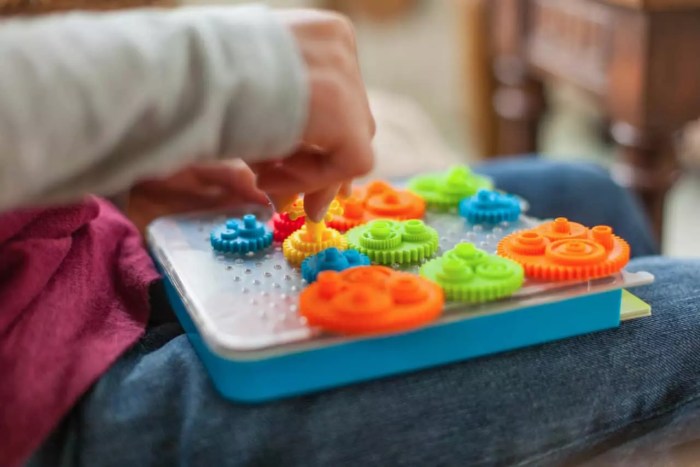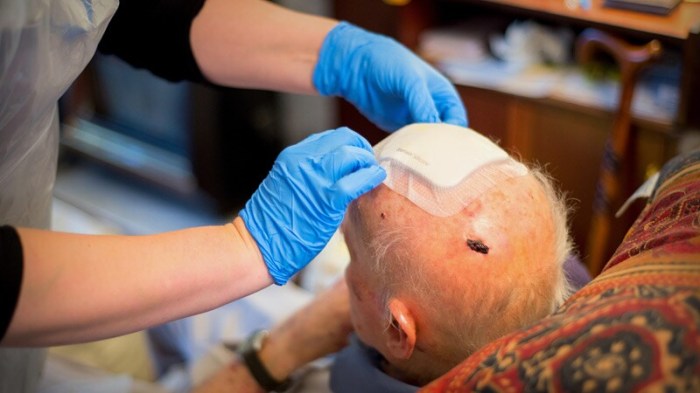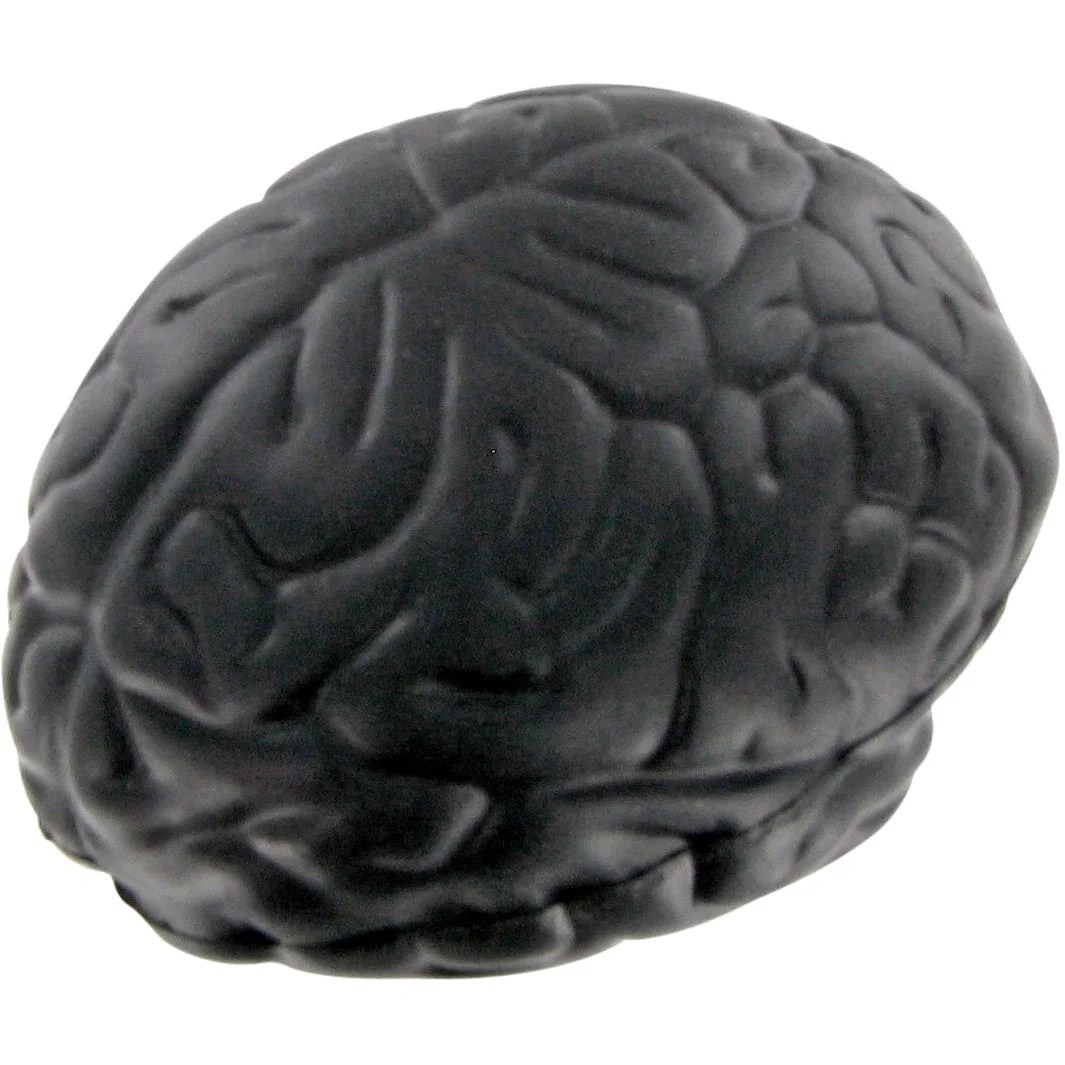Toys for brain injured adults are not just playthings; they are powerful tools that can enhance cognitive, sensory, and social well-being. Join us as we explore the fascinating world of these specialized toys, their benefits, and how they can make a positive impact on the lives of brain injured individuals.
From stimulating memory and attention to providing sensory stimulation and fostering social interaction, toys for brain injured adults offer a range of therapeutic benefits. Let’s delve deeper into the types of toys available, their cognitive functions, and how they can be used to support individuals in their recovery journey.
Cognitive Benefits of Play
Play is not just a frivolous activity for children; it also offers significant cognitive benefits for brain-injured adults. Engaging in play can stimulate cognitive functions, enhancing abilities such as memory, attention, and problem-solving.
Memory Enhancement
Play, particularly games involving memory challenges, can help improve memory function in brain-injured adults. These games stimulate the brain’s ability to encode, store, and retrieve information, strengthening neural pathways involved in memory formation.
- Example:Memory matching games, such as Concentration or Pairs, require players to remember the location of matching cards, enhancing visual memory.
- Example:Word puzzles, like crosswords or Sudoku, challenge verbal memory and problem-solving skills.
Attention Improvement
Play activities that require sustained attention can help improve attention span and focus in brain-injured adults. These activities train the brain to filter out distractions and maintain attention on specific tasks.
- Example:Jigsaw puzzles require sustained visual attention and spatial reasoning skills.
- Example:Card games, such as Go Fish or Uno, demand attention to detail and quick decision-making.
Problem-Solving Enhancement
Play can foster problem-solving abilities by presenting challenges that require creative thinking and strategic decision-making. Engaging in these activities helps strengthen neural connections involved in executive function and logical reasoning.
- Example:Strategy board games, like chess or checkers, encourage critical thinking and problem-solving.
- Example:Escape rooms challenge players to solve puzzles and find solutions under time constraints.
Sensory Stimulation
Sensory stimulation is vital for brain-injured adults as it helps to promote neuroplasticity and the formation of new neural pathways. Toys can be a valuable tool for providing sensory stimulation through different modalities, such as touch, sight, sound, and smell.
Tactile Stimulation
- Benefits:Tactile stimulation can help to improve fine motor skills, spatial awareness, and body awareness.
- Toys:Toys that provide tactile stimulation include textured balls, squeeze toys, and fidget cubes.
Visual Stimulation
- Benefits:Visual stimulation can help to improve attention, memory, and problem-solving skills.
- Toys:Toys that provide visual stimulation include bright colors, flashing lights, and moving objects.
Auditory Stimulation
- Benefits:Auditory stimulation can help to improve language comprehension, auditory processing, and musicality.
- Toys:Toys that provide auditory stimulation include musical instruments, sound effects, and white noise machines.
Olfactory Stimulation
- Benefits:Olfactory stimulation can help to improve memory, mood, and relaxation.
- Toys:Toys that provide olfactory stimulation include scented candles, essential oil diffusers, and scented toys.
Social and Emotional Benefits: Toys For Brain Injured Adults

Play offers significant social and emotional benefits for brain-injured adults. Toys can facilitate social interaction, reduce isolation, and promote emotional well-being.
Social Interaction
Toys that encourage cooperative play, such as board games or puzzles, can foster social interaction and communication skills. They provide opportunities for individuals to engage with others, share ideas, and work towards a common goal.
Reducing Isolation
Play can reduce feelings of isolation and loneliness in brain-injured adults. Toys that allow for creative expression, such as art supplies or musical instruments, provide an outlet for individuals to express themselves and connect with others who share similar interests.
Emotional Expression
Toys can also facilitate emotional expression and regulation. Toys that are designed to stimulate the senses, such as fidget toys or weighted blankets, can help individuals manage stress, anxiety, or other emotional challenges.
Toy Selection and Adaptation

Selecting appropriate toys for brain-injured adults requires careful consideration of their unique needs and abilities. Factors to consider include:
Cognitive abilities
Toys should match the individual’s cognitive level and provide opportunities for stimulation and cognitive rehabilitation.
Physical limitations
Toys should be accessible and easy to manipulate, considering any physical impairments or mobility issues.
Personal preferences
Individual preferences and interests should be taken into account to enhance engagement and motivation.Toys can be adapted or modified to meet individual needs, such as:
- Adding handles or gripsto toys for easier manipulation.
- Adjusting the weight or sizeof toys to suit physical limitations.
- Modifying toys to make them sensory-richby adding lights, sounds, or textures.
Play Activities and Interventions
Play activities and interventions can provide cognitive, sensory, social, and emotional benefits for brain-injured adults. These activities can help to improve attention, memory, problem-solving skills, and social interaction.
There are a variety of play activities and interventions that can be used with brain-injured adults. These activities can be tailored to individual goals and abilities.
Cognitive Play Activities
- Puzzles:Puzzles can help to improve problem-solving skills, attention, and memory. They can also be used to target specific cognitive skills, such as visual-spatial skills or executive function.
- Board games:Board games can help to improve attention, memory, and social skills. They can also be used to target specific cognitive skills, such as strategy or planning.
- Card games:Card games can help to improve attention, memory, and social skills. They can also be used to target specific cognitive skills, such as sequencing or counting.
Sensory Play Activities
- Sensory bins:Sensory bins are filled with different materials that can be explored using the senses. These activities can help to improve sensory processing, fine motor skills, and language skills.
- Fidget toys:Fidget toys can help to improve attention and focus. They can also be used to help regulate sensory input.
- Weighted blankets:Weighted blankets can help to provide a sense of calm and relaxation. They can also be used to help improve sleep.
Social and Emotional Play Activities, Toys for brain injured adults
- Role-playing:Role-playing can help to improve social skills, communication skills, and problem-solving skills. It can also be used to help process emotions.
- Music therapy:Music therapy can help to improve mood, reduce stress, and improve social interaction. It can also be used to help process emotions.
- Art therapy:Art therapy can help to improve self-expression, communication skills, and problem-solving skills. It can also be used to help process emotions.
Case Studies and Success Stories

Case studies and success stories offer valuable insights into the positive impact of toys on brain-injured adults. They demonstrate the effectiveness of specific toys, interventions, and the resulting improvements observed in individuals’ cognitive, sensory, social, and emotional well-being.
Toys for brain injured adults can be a great way to stimulate cognitive function and promote recovery. These toys often focus on improving memory, attention, and problem-solving skills. They can also be used to encourage social interaction and communication. If you’re looking for a toy that can help improve cognitive function, a cells vs viruses venn diagram might be a good option.
This type of toy can help improve visual-spatial reasoning and problem-solving skills. It can also be used to teach children about the differences between cells and viruses.
These examples serve as valuable guides for selecting and using toys for other individuals with brain injuries. They provide a practical understanding of what works, what doesn’t, and how to adapt toys to meet individual needs.
Example 1
A study conducted at a rehabilitation center used a variety of toys, including puzzles, building blocks, and sensory balls, to engage brain-injured adults in play activities. The participants showed significant improvements in their cognitive skills, particularly in problem-solving, memory, and attention.
Example 2
Another study focused on the use of sensory toys for adults with traumatic brain injuries. The participants were provided with toys that provided tactile, auditory, and visual stimulation. The study found that these toys helped reduce agitation, improve mood, and promote relaxation.
Example 3
A case study described the use of social skills toys for an adult with a brain injury who had difficulty interacting with others. The individual was given toys that encouraged cooperative play, such as board games and role-playing toys. Over time, the individual showed improvements in their social skills, including increased communication and empathy.
Conclusion
These case studies and success stories highlight the potential of toys to enhance the lives of brain-injured adults. By understanding the specific toys and interventions used in these examples, practitioners and caregivers can make informed decisions about how to use toys to support the cognitive, sensory, social, and emotional well-being of individuals with brain injuries.
Resources and Recommendations

For further information and support on toys for brain-injured adults, consult the following resources:
Organizations and Support Groups:
- Brain Injury Association of America (BIAA): https://www.biausa.org/
- National Brain Injury Center (NBIC): https://www.braininjurycenter.org/
- BrainLine: https://www.brainline.org/
Websites:
- Toys for Brain-Injured Adults: https://www.ncbi.nlm.nih.gov/pmc/articles/PMC3427958/
- Choosing Toys for Adults with Brain Injuries: https://www.healthline.com/health/toys-for-brain-injury-adults
- Toys for Brain Injured Adults: https://www.alzheimers.net/toys-for-brain-injured-adults/
Recommended Reading and Research:
- The Role of Toys in the Rehabilitation of Brain-Injured Adults: https://www.tandfonline.com/doi/abs/10.1080/02699930701678251
- Toys for Brain-Injured Adults: A Guide for Clinicians and Families: https://books.google.com/books?id=7gJ8DwAAQBAJ&pg=PA117&lpg=PA117&dq=Toys+for+Brain-Injured+Adults:+A+Guide+for+Clinicians+and+Families&source=bl&ots=jbf29_6pVF&sig=ACfU3U1p_TzO8cU30_cL30nAQv9T4zBdMw&hl=en
- The Use of Toys in Cognitive Rehabilitation: https://www.ncbi.nlm.nih.gov/pmc/articles/PMC3717518/
General Inquiries
What are the different types of toys available for brain injured adults?
There is a wide range of toys available, including puzzles, games, sensory toys, and interactive toys. Each type of toy targets specific cognitive functions and provides unique benefits.
How can toys stimulate cognitive functions in brain injured adults?
Toys can stimulate cognitive functions by providing challenges that require memory, attention, problem-solving, and other cognitive abilities. Playful activities can help improve cognitive skills and enhance overall brain function.
Why is sensory stimulation important for brain injured adults?
Sensory stimulation helps to activate different parts of the brain, promoting neural connections and improving cognitive function. Toys that provide sensory stimulation, such as tactile toys, light-up toys, and music toys, can be beneficial for brain injured individuals.
How can toys facilitate social interaction for brain injured adults?
Toys can be used as a bridge to social interaction, encouraging communication, cooperation, and sharing. Social toys, such as board games, cooperative games, and interactive toys, can provide opportunities for brain injured adults to engage with others and build social connections.
What factors should be considered when selecting toys for brain injured adults?
When selecting toys, it is important to consider the individual’s cognitive abilities, physical limitations, and personal preferences. Toys should be challenging but not overwhelming, and they should provide opportunities for success and enjoyment.